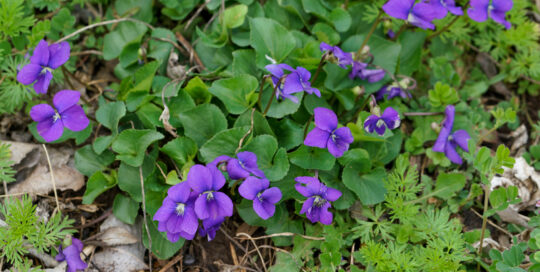Butterfly Garden Basics
Views: 5942
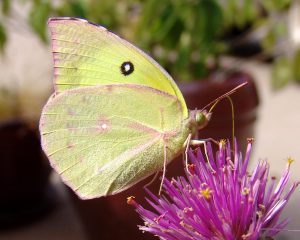
Butterfly gardens bring double beauty to any landscape: Gorgeous flowers! Colorful butterflies! Plus, they aren’t difficult to create by providing a few basic butterfly needs.
Butterfly gardens should have the following:
– Habitat
– Nectar plants (food)
– Host plants
– Hospitable landscape
Habitat
I like to talk about habitat first because most literature on butterfly gardens recommends finding a sunny spot to start your garden. I don’t disagree with that. But. But! Not all butterflies prefer the blazing sun. There are many, many butterflies that live in woodlands, hang out by streams, prefer shady areas, and just aren’t going to be tempted by that bed of Zinnias in the hot part of your yard. Granted, most of these woodland and shade-loving butterflies aren’t flashy. They blend into their surroundings; they may be leaf-shaped and leaf-colored. They’re brown or black. With names like “Duskywing” and “Cloudywing” you don’t expect brilliant colors. But I find them beautiful. So, as part of my butterfly gardening, I try to provide them with shade-loving flowers, flowering trees, and suitable host plants that may not fit into a sunny garden. The more variety you have in your landscape, the more varied your butterflies will be.
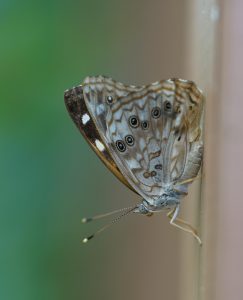
This beautiful Hackberry Emperor butterfly is found near woodland edges and places with Hackberry trees.
Nectar plants
There are many, many nectar plants. For this entry, I won’t try to list them. But for a butterfly garden, you want mass plantings, three or more. Think like a butterfly, flying along at altitude, looking for a rest stop. A mass of orange, purple, red, yellow, or white is a billboard advertising lunch. You want your garden to be seen. Different colors may appeal more to certain butterflies, so it’s good to have a mix.
It’s also important to plant flowers that will bloom throughout the season. So, you want flowers blooming in spring, summer, and fall. Some annuals, like Zinnias, can provide color all season. Perennials can be planted to ensure something is always blooming: In my yard, I have salvia and coreopsis blooming in early spring, gomphrena and milkweed blooming in summer, and asters and Cow Pen Daisies blooming in fall, just to name a few.
Try to have plants of varying heights. Remember those shade-lovers I mentioned before? A mix of heights will provide some flowers that are in shade. In my yard, I never see my Nysa Roadside-Skippers perched up high on a blossom. Always, they are down low, in shadows or close to the ground. Conversely, Gulf Fritillaries prefer to be out in the open, often on flowers that stick up above the rest.
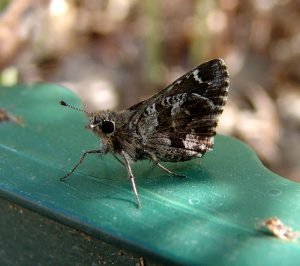
Nysa Roadside-Skipper
Host plants
Every species of butterfly has a host plant or plants upon which it will lay eggs and its caterpillars will eat. For example, milkweed is a host plant for Monarchs and passionflower vines are used by Gulf Fritillaries. Several butterflies use various trees, others use weeds, grasses, or the vegetables in your vegetable garden like cabbage, broccoli, or cauliflower. Dill and fennel are host plants for swallowtails. My recommendation is to do a little research on the butterflies you like the most and plant accordingly.
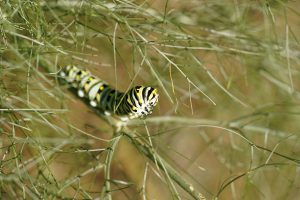
Black swallowtail caterpillar on bronze fennel.
Hospitable landscape
You can leave windfall fruit on the ground for butterflies or even provide fruit in feeders. You don’t want to use insecticides near your butterfly garden or host plants (killing caterpillars is counterproductive if you want to have butterflies, although protecting your cabbage is understandable). Finally, don’t use bug-zappers. It’s a poor host who invites company in for dinner and then executes them.
Follow these simple guidelines, and you will have a successful butterfly garden!
Meet Leslie Miller
Leslie Ann Miller shares 3.5 acres in rural Oklahoma with birds, butterflies and wide variety of animals. She is currently transforming her yard with plantings…
Leslie's Recent Posts

Early spring is time to plant native spring ephemerals
